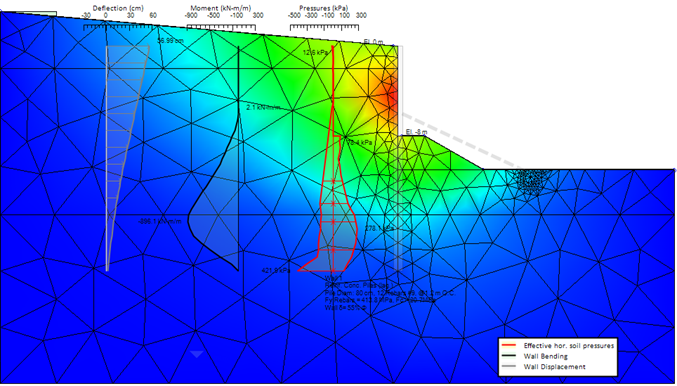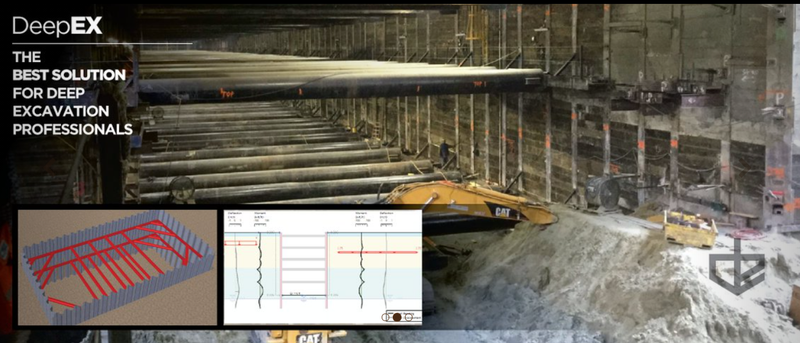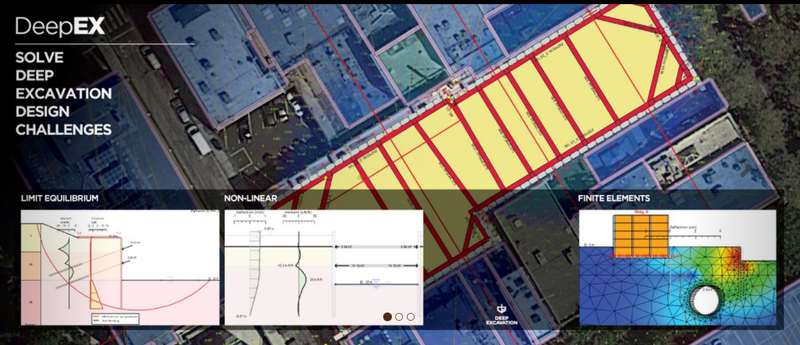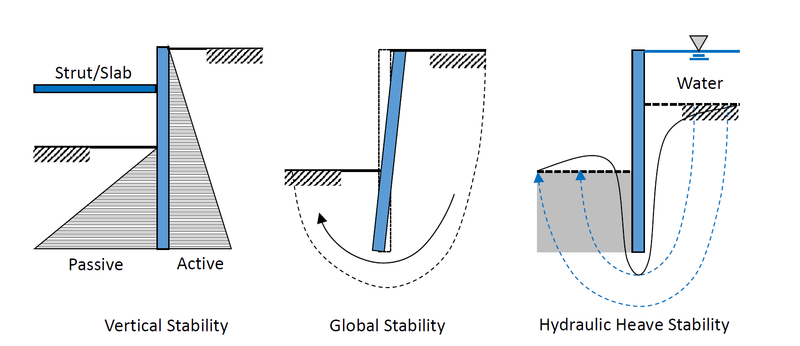read our latest articles ##DeepExcavation
A deep excavation in Indonesia experienced significantly greater deformations vs. the design levels as presented in the paper “Back calculation of excessive deformation on deep excavation” by M.F. Ma’ruf and H. Darjanto. The original authors recalibrated soil properties and benchmarked the measured response by adjusting soil properties in a finite element analysis model using the Mohr Coulomb model. Our review indicated that the deformations could have been predicted by using the original soil properties and with minor modelling adjustments using even only Limit-Equilibrium methods or non-linear analysis Winkler methods. Using the hardening soil model with the original soil strength properties also produced far better agreement vs. the Mohr Coulomb.
Read MoreIn many construction projects at which the working space is limited, a vertical deep excavation is often the only viable option. Technically, SNI 8460:2017 classifies the deep excavation as an excavation with depth greater than 3.0 m. For maintaining soil stability, a combination of embedded wall, struts, ground anchor, etc., are commonly used together.
Read MoreDeepEX is a powerful advanced geotechnical application with all essential modules for the design and analysis of deep excavation projects. It is trusted by more than 2000 engineers and engineering companies worldwide. More than 10000 projects have been designed using DeepEX.
Read MoreIn many construction projects at which the working space is limited, a vertical deep excavation is often the only viable option. Technically, SNI 8460:2017 classifies the deep excavation as an excavation with depth greater than 3.0 m. For maintaining soil stability, a combination of embedded wall, struts, ground anchor, etc., are commonly used together.
Read More



